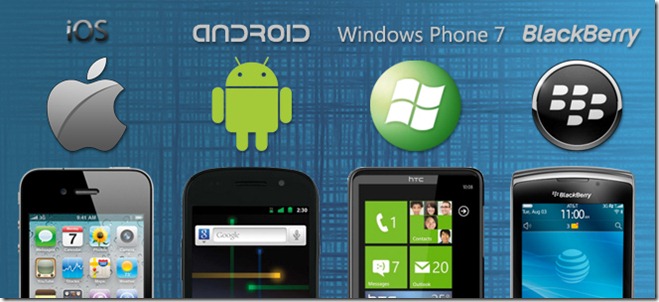There’s no question that mobile apps have become a necessity, especially as smartphone and tablet sales rapidly increase. They are not just a mobile extension of your website or another form of advertisement; apps are actually a new medium that revolutionizes customer service. Businesses are now using mobile apps to enhance brand image, engage and inform customers, and provide services and utility.
There is more to mobile apps than it appears at first glance. There are numerous means to develop an app that satisfies various company goals, objectives, and budget concerns. The different methods determine the breadth of reach, quality of the application, and price of development.
When deciding the best option for your company, keep in mind that building a mediocre app that compromises on quality is just as bad as producing any other mediocre product. Apps that don’t resonate with a customer get uninstalled, unimaginative apps get ignored, while high-quality apps that meet the needs of their target user base will continue bringing in traffic on a repeated basis. Consider the following when planning out your mobile app solution:
* Mobile Platforms
* Native Apps vs. Web Apps
* Platform-Specific vs. Cross-Platform Apps
* Service Integration
These topics will be discussed in a series of blogs that will educate you about smartphone and tablet applications.
This blog will explain the differences between each mobile platform so you can fully understand which platforms work best for your organization.
Mobile Platforms
The operating systems (OS) powering each of the most popular mobile platforms in the industry are:
* iOS by Apple – Designed specifically for Apple’s line of iPhone, iPod Touch, and iPad devices.
* 30% of U.S. smartphone OS market share in Q4 2011 (Nielsen, 2012).
* 30.1% of Canadian smartphone OS market share in Sep 2011 (comScore, 2011).
* 15.0% of global smartphone OS market share in Q3 2011 (Gartner, 2011).
* 57.6% of global tablet OS market share in Q4 2011 (Strategy Analytics, 2012).
* Android by Google – Designed for Android smartphones by numerous companies such as HTC, LG, Samsung, and Sony Mobile Communications (formerly Sony Ericsson), as well as for tablets by companies such as Acer, Asus, Motorola, Samsung, and Sony.
* 46.3% of U.S. smartphone OS market share in Q4 2011 (Nielsen, 2012).
* 25.0% of Canadian smartphone OS market share in Sep 2011 (comScore, 2011).
* 52.5% of global smartphone OS market share in Q3 2011 (Gartner, 2011).
* 39.1% of global tablet OS market share in Q4, 2011 (Strategy Analytics, 2012).
* BlackBerry by Research in Motion – Designed specifically for BlackBerry phones (Bold, Storm, Torch, etc.) and PlayBooks.
* 14.9% of U.S. smartphone OS market share in Q4 2011. (Nielsen, 2012).
* 35.8% of Canadian smartphone OS market share in Sep 2011 (comScore, 2011).
* 11.0% of global smartphone OS market share in Q3 2011 (Gartner, 2011).
* Windows Phone 7 by Microsoft – Designed for Windows Phone 7 phones by numerous companies, including Dell, LG, HTC, and now Nokia.
* 4.6% of U.S. smartphone OS market share in Q4 2011 (Nielsen, 2012).
* 3.2% of Canadian smartphone OS market share in Sep 2011 (comScore, 2011).
* 1.5% of global smartphone OS market share in Q3 2011 (Gartner, 2011).
* 1.5% of global tablet OS market share in Q4 2011 (Strategy Analytics, 2012).
These operating systems experience continuous updates to improve speed, functionality, user-friendliness, as well as many other aspects of the affected phones. The various updates are labelled with version numbers (ie. iOS 5.1 and Android 2.3) and are sometimes code-named (ie. Android “Ice Cream Sandwich”, Windows Phone 7 “Mango”). With these updates, support and maintenance is usually required for apps to maintain their performance and relevance.
Each platform has unique designs (colours, styles) and functionalities. For example, iOS often has light blue bars with various touch functionalities (back, share, etc), Android has a menu button (soon to change to an “action bar”) and back button, and BlackBerry usually has smaller screens plus a BlackBerry menu and back button. This will be important to consider when selecting platform-specific vs. cross-platform apps, which will be discussed in a following blog.
The ideal method of determining the appropriate platforms is to survey your customers. You should discover which platforms are most popular among your target market, because it will help improve your reach. This is also a great opportunity to determine what functionalities your customers need, want, or suggest. If the cost or time of a survey doesn’t work for your institution, the easiest way is to analyze the market shares in your country, which were presented earlier.
When choosing a platform, keep in mind that many users of one operating system often cannot access applications built for other platforms. As evident in the statistics mentioned earlier, each platform owns a generous share of the market. In the near future, the smartphone market is expected to remain ologopolistic and the tablet market is also expected to level out. Therefore, it is becoming increasingly important to develop apps for more than one platform.
Once you have determined the best platforms for your customers, you will need to consider whether you need a “native app” or a “web app.” Click here to learn more about native apps.
Push Interactions
Push Interactions develops smartphone and tablet applications for the four major platforms mentioned above. Our platform specialists collaborate to ensure consistent quality across each of the involved platforms. Our applications are developed platform-specific, meaning the design and functionality for each application will conform to the end user’s platform expectations.
As mentioned previously, the various platforms are continuously upgraded. We offer a Support & Maintenance service to ensure that your app is always compatible with the newest smartphones, tablets, and operating systems.
To learn more, contact us

